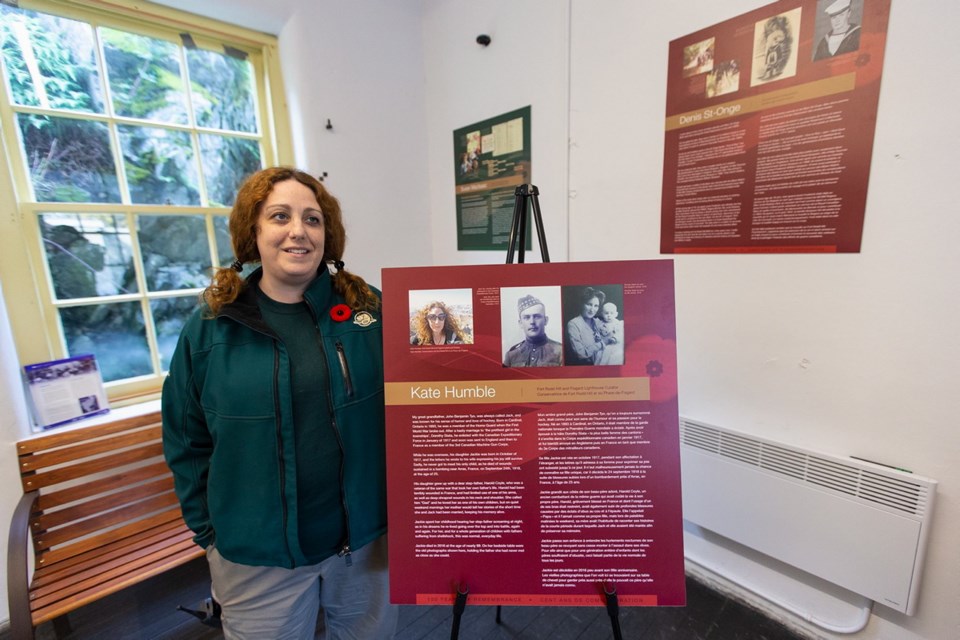Chris Preston, veteran of Canadian peacekeeping, son of a Second World War merchant sailor and grandson of two First World War veterans, has the historical pedigree to understand the importance of Remembrance Day.
Preston, retired after 44 years in the Royal Canadian Navy Reserve Forces and 25 years with the Victoria Police Department, now wants to help other Canadians understand what he knows implicitly.
“We all need to remember our history, because if we don’t, we are going to repeat the same mistakes,” said the 64-year-old Saanich resident.
Preston volunteers at the Ashton Armoury Museum on Vanalman Avenue and will be at Fort Rodd Hill on Sunday for a special event marking the 100th anniversary of the end of the First World War.
It’s the first element of a week of remembrance at Fort Rodd Hill leading up to Remembrance Day on Nov. 11.
Other participants include the CFB Esquimalt Naval and Military Museum, the B.C. Aviation Museum, the museum of the Canadian Scottish Regiment (Princess Mary’s) and the Victoria Genealogical Society. In all, 20 historical and museum organizations will take part in the event, which will include military vehicles, artifacts and displays.
The 100 Years of Remembrance display, featuring wartime stories of the family members of Parks Canada staff who work at the site, will also be unveiled.
Preston said the First World War is notable because military leaders were still employing 19th-century tactics even as technology had brought killing to an industrial level with new machinery like the machine gun, aircraft, tanks and sophisticated artillery.
“The casualties were just horrific,” he said. “The really significant thing about the First World War is that it was the first modern war involving science and modern weapons.”
More than 60,000 Canadians were killed during the war, and another 172,000 were injured.
Kate Humble, curator of Fort Rodd Hill and Fisgard Lighthouse National Historic Site, said supporting that war effort had a big effect on Victoria, and many connections remain.
The Royal Jubilee Hospital, for example, was a significant training hospital for nurses and by 1918 had sent more than 100 women to France, some of whom were killed there.
General Sir Arthur Currie, who worked and enlisted in Victoria, rose up to command the Canadian Corps, distinguishing himself with a determination to learn new tactics to keep casualties down.
Local women’s organizations raised money and collected warm clothing for the troops. Muggins the Red Cross Dog was led about with little panniers to collect donations, and wounded soldiers sold war bonds at a fortified mock bunker called “the Dugout” near Fort and Government streets.
Humble said the 100-year anniversary of the end of the First World War is a good time to pay special honour in memory of armed conflicts.
“A century seems like a long time but it isn’t really,” she said. “It was promised to be ‘the War to End All Wars,’ but Canada has been involved in a number of others since.
“So it’s really important that we keep the tradition of remembrance alive.”
• The Armistice 100 event takes place Sunday from 10 a.m. to 3 p.m. at Ford Rodd Hill National Historic Site. Admission is $3.90 for adults, $3.40 for seniors and free for those under 18.



